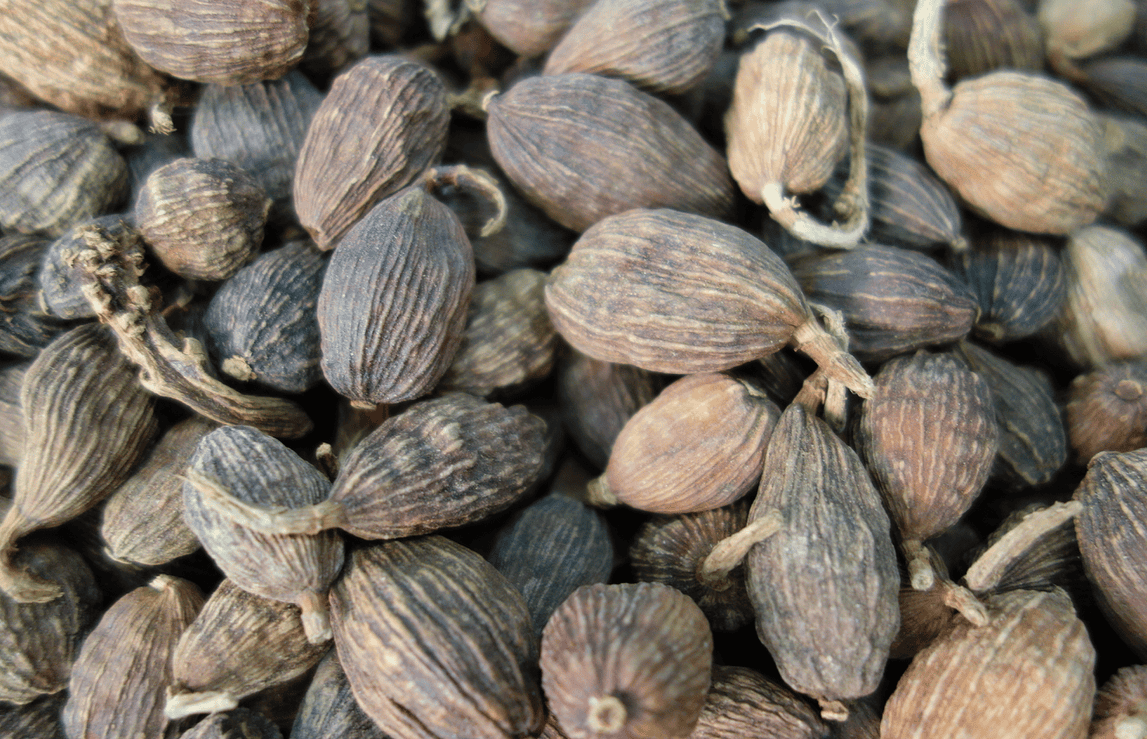Amomum tsao-ko, Cao Guo 草果
Black CardamonCao Guo (TCM)
 Amomum Cao Guo
Amomum Cao Guo(Adam, 2017)
Botanical name:
Amomum tsao-ko (syn. A. hongtsaoko)
Parts used:
Fruit
Temperature & Taste:
Warm, dry. Pungent
Classification:
J. Aromatics that Resolve Dampness
Uses:
1. Moves the Qi, Warms the Stomach, Dries Damp:
-epigastric and abdominal fullness, distention, pain and a greasy tongue coat
-Indigestion, Nausea, Vomiting, Bloating, Diarrhea
2. Moves Qi, Opens Obstructions:
-Food Stagnation with indigestion, nausea
-focal distention from Stomach Cold and Qi obstruction
3. Malarial Disorders:
-Intermittent Fever and Chills, especially with signs of Damp
Dose
:Decoction: 3–6 grams
Powder: 500mg–3 grams
Preparation:
1. Ginger Processed (Jiang Cao Guo):
Stir-fry with 10% of their weight of fresh Ginger juice until the juice is absorbed, then dry. It has a greater effect of warming the Stomach, settling Nausea and relieving Vomiting.
Main Combinations:
1. Stomach Cold–Damp:
i. Amomum Cao Guo with fresh Ginger
ii. Amomum Cao Guo with Atractylodes Cang Zhu, Agastache Huo Xiang
2. Stomach Cold–Phlegm:
i. Amomum Cao Guo with Ginger, Pinellia Ban Xia
3. Epigastric pain, distension and fullness in the chest and abdomen, Amomum Cao Guo with Chebulic Myrobalan, Calcite, Shilajit, Inula racemosa, Pomegranate, Aloeswood, Clove, Safflower (Tibetan Medicine)
4. Epigastric and abdominal Pain from Qi and Blood stagnation, Amomum Cao Guo with Corydalis Yan Hu Suo and Myrrh
5. Malarial Disorders with Fever and Chills:
i. Amomum Cao Guo with Dichroa Chang Shan, Betel Nut (Bing Lang)
Major Formulas:
Mu Xiang Liu Qi Yin
Shi Pi Yin
Cautions:
Not suitable in Yin or Blood deficiency (dryness).
Main Preparations used:
-
Extra Info
- Research
–Amomum tsao-ko Crevost & Lemarié: a comprehensive review on traditional uses, botany, phytochemistry, and pharmacology.
